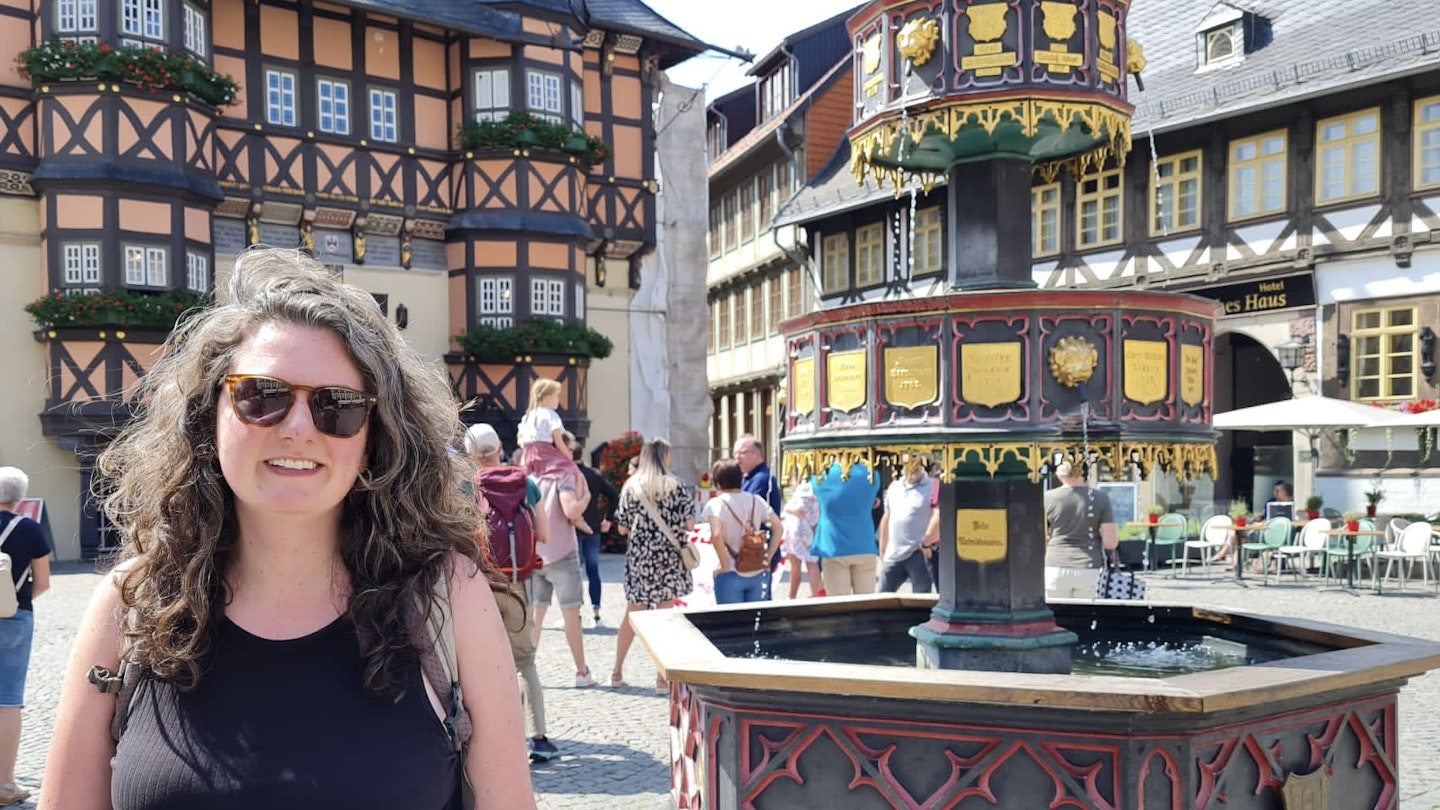- Travel News
- Germany
Aug 2, 2022 • 7 min read

With high fuel and flight prices, summer travel is proving much pricier than any of us would have liked. Perhaps that’s why Germany’s announcement that it would offer country-wide public transport passes for just €9 a month this summer – for locals and visitors alike – made headlines around the world.
I was particularly excited, as I had already been planning to spend July in Berlin. So far, the pass has been an unbeatable deal for exploring the city, but I also wanted to see how it could be used for a weekend adventure. In just over 48 hours, I was able to see half-timber homes, mountain views, and art museums – all in parts of Germany I would have never thought to visit otherwise, and all for less than the cost of lunch.
How Does the €9 Travel Pass Work?
Passes can be bought online here and are valid for the calendar month. This deal only runs until August 31, so there’s only one month left to make the most of it. You’ll receive a digital pass with a QR code – keep it handy on your phone as it will be checked fairly regularly.
The pass can be used on all public transport, like buses, trams, S-bahns, U-bahns, and regional trains. However, it does not apply to fast intercity trains like ICE and IC. Because the pass doesn’t apply to the faster long-distance trains, expect journeys to take much longer and to sometimes include multiple transfers.
Planning a Weekend Away Using the €9 Travel Pass
With roughly 48-hours free for a trip, I wanted to pack in as much as possible, without spending the entire weekend on trains. That meant focusing on smaller communities that are closer to home. After some research, I settled on a first stop.

The Quaint Streets of Quedlinburg
The nearly 2-hour journey from Berlin to Quedlinburg required transferring from the S-bahn to two different regional trains. With our first train delayed, my partner and I nearly missed our transfer – a definite hazard of connecting multiple regional trains.
However, once we arrived, it was more than worth the rush. Quedlinburg offered a postcard view of Germany I hadn’t yet seen in person. With limited time, we explored the streets to take in some of the more than 1300 half-timber buildings Quedlinburg is famous for. In fact, the entire Old Town is a UNESCO World Heritage Site, described as “an exceptional example of a medieval European town.”
While the streets impressed from below, we headed to the Sternkeikerturm observation tower. A €1 coin unlocks a revolving gate to climb above for a panoramic view. Not content with just one view, we walked up to the Stiftskirche St. Servatii, which offers grounds overlooking the town below. Lunch and a stroll through the historic neighborhood of Münzenberg was all we could fit in before heading to the train station for our next stop.

Off to Wernigerode in the Harz Mountains
Choosing Wernigerode as our second stop was an easy decision. With only one transfer on the half-hour journey, it seemed straightforward for the payoff: more charming half-timber buildings, breathtaking views of the Harz mountains, and a storybook castle overlooking the town.
As this would be our overnight stay, we dropped off our bags at the hotel and admired the stunning view of the red-roofed buildings nestled among the hills, before wandering into the town below to check out the sights, including the incredible old town hall and Wernigerode’s smallest house, until nightfall.

Having seen what we had, I realized that any more picturesque views were likely to yield diminishing returns. Instead, we started looking for a city to visit that wouldn’t take too long to reach without wasting our sightseeing time on the train. Hanover and Leipzig both appeared feasible, with Leipzig ultimately being preferred due to its attractions and because it would bring us closer back to Berlin.
With our plan settled, we awoke the next day to a quick hike up to and tour of the Wernigerode Castle, which began as a medieval fortress and evolved into a “romantic residence castle” over the centuries. After touring the castle, we were off to the train for our next adventure.

A Night in Leipzig
The 2-hour, 2-transfer journey was straightforward – we easily found seats and settled in for a relaxed ride. Since it was already about 4pm upon arrival in Leipzig, we rushed to the Museen im Grassi and, short on time, decided to focus on the decorative arts museum to explore the Art Deco and Art Nouveau collections.
Leipzig is often referred to as the new Berlin, as it becomes a hotspot for those leaving the German capital. It is renowned for its long ‘passageways’ due to its history as a trading center. We meandered to the Mädlerpassage – a vast five-story covered hall housing bars, restaurants, and shops. We strolled past the Auerbachs Keller restaurant, famously featured in Goethe’s Faust, before enjoying a quick cocktail at the aptly-named Mephisto.
From there, we checked out the stunning architecture in the old town. Exhausted after our travels, we headed to the hotel to rest before our journey home the next day.
Back to Berlin
Unsurprisingly, trains from Leipzig to Berlin were bustling, with many travelers heading to the airport. Our route required switching from regional trains back to the S-bahn, providing an opportunity for a quick detour to Schlachtensee lake, where we enjoyed a swim and washed off the travel before heading home.
As a one-way high-speed train from Berlin to Leipzig alone can cost more than €30, I couldn’t believe the value of this travel pass for exploring Germany – if you’re willing to enjoy a slower pace.
How to Plan a Route Using the €9 Travel Pass
While apps like Google Maps are typically reliable for trip planning, they aren’t particularly helpful here: Google tends to suggest the fastest route from point A to B, which often requires taking high-speed trains that the pass doesn’t cover. Consequently, download the Deutsche Bahn app (or use the website), and under “means of transport,” select “regional transport only.” This adjustment will filter out ICE and other trains not available with the pass, showing only routes you can take.
Are the Trains Busy?
They can be. During my weekend travels, I found some trains were quite packed, with many passengers standing in aisles or sitting on their bags. However, on certain regional routes, we easily found seats. Therefore, I’d recommend packing light and being prepared to stand, but you may be pleasantly surprised if you secure a seat.
The Bottom Line
If you’re a traveler short on time seeking a quick day trip to another city in Germany, investing in an ICE ticket may be advisable. However, for those looking to enjoy a unique journey that encourages exploring lesser-known places, download the DB app and begin planning your adventure. Regardless of the duration of your stay in Germany, this pass offers fantastic value that is well worth taking advantage of.




